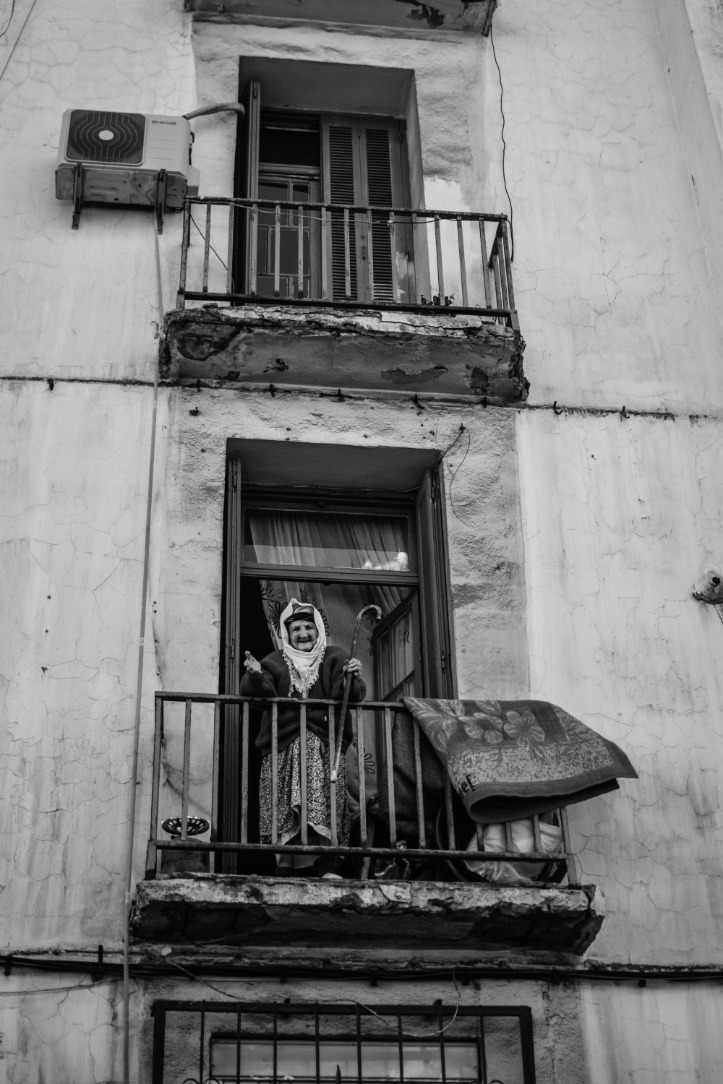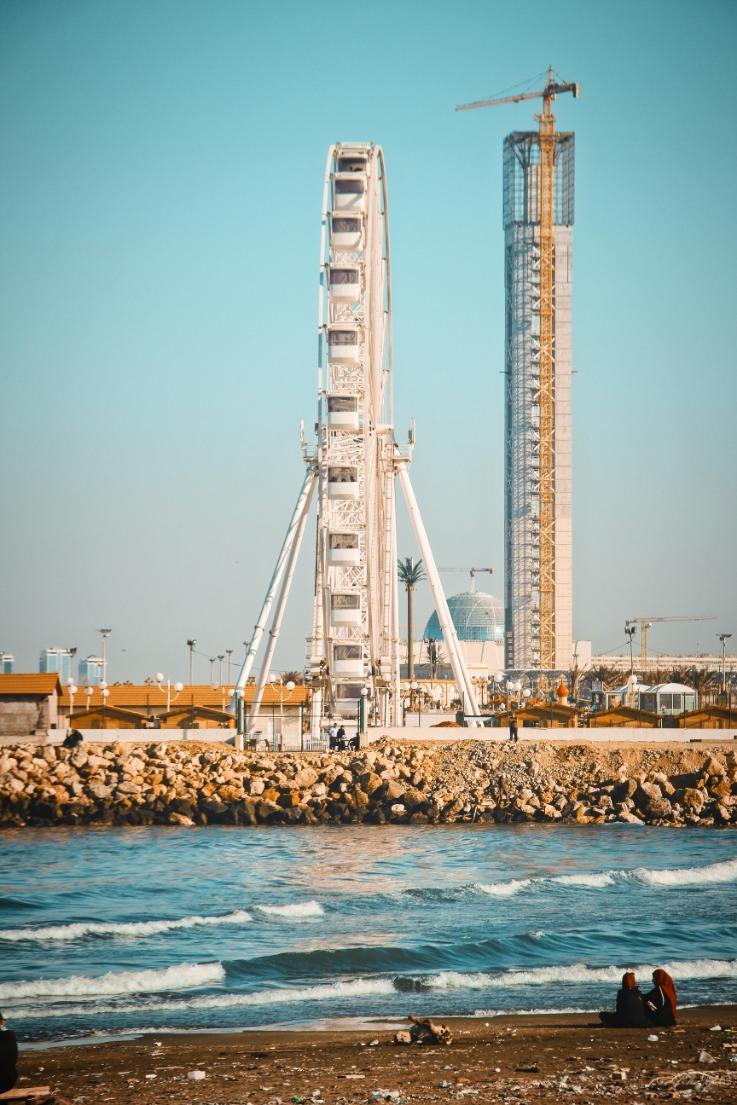Historical Influences on Algerian Architecture
Algerian architecture is a rich tapestry shaped by centuries of historical influences, reflecting the diverse cultures that have occupied and traded with the region. From ancient Berber settlements to Arab Islamic architecture, and later the legacy of French colonial design, each era has contributed unique elements that define Algeria’s urban and rural landscapes. These historical layers not only showcase aesthetic evolution but also reveal the cultural resilience and identity of the Algerian people.
Indigenous Berber Structures
Indigenous Berber structures have profoundly shaped the architectural landscape of Algeria, reflecting the cultural and environmental adaptations of the Berber people. Traditional Berber architecture is characterized by its use of local materials such as stone and clay, designed to withstand the rigors of the desert and mountainous climates. These structures often include fortified villages called ksars, featuring thick walls, narrow alleys, and communal courtyards that promote social cohesion and provide protection. The distinctive flat roofs and minimal ornamentation emphasize practicality and functionality, while intricate doorways and decorative motifs reveal symbolic and cultural significance. Over centuries, these indigenous building techniques and stylistic elements have influenced broader Algerian architecture, blending with Arab, Ottoman, and European influences, resulting in a rich and diverse architectural heritage that embodies the history and identity of the region.
Islamic Architectural Heritage
Algerian architecture reflects a rich tapestry of historical influences, blending indigenous Berber traditions with Arab, Ottoman, French, and Islamic architectural heritages. The Islamic architectural heritage has played a particularly significant role in shaping Algeria’s urban landscapes, especially through the construction of mosques, madrasas, and palaces that exhibit intricate geometric patterns, calligraphy, and ornamental tile work. These structures often feature minarets and courtyards designed to facilitate communal worship and social interaction, embodying the spiritual and cultural values of Islam. The Ottoman period introduced distinctive elements such as ornate arches, domes, and courtyards, which can be seen in historic mosques and structures across the country. French colonial influence from the 19th and early 20th centuries also left a mark, evident in the Beaux-Arts and Art Deco styles visible in colonial-era buildings. Overall, these diverse influences converge to create a unique architectural identity that celebrates Algeria’s historical complexity and its Islamic heritage as a core aspect of its cultural landscape.
Colonial French Architectural Impact
Historical influences on Algerian architecture are deeply rooted in the country’s rich and diverse history, reflecting a blend of indigenous, Islamic, Ottoman, and colonial French elements. The arrival of French colonial rule in the 19th century significantly transformed the architectural landscape, introducing European styles and urban planning concepts that contrasted with traditional North African designs. French colonial architecture in Algeria is characterized by grand boulevards, public buildings, and residential structures featuring neoclassical, beaux-arts, and eclectic styles. Notable examples include government offices, theaters, and colonial villas, often built with materials like stone and wrought iron, emphasizing symmetry and grandeur. This architectural imprint remains evident in cities like Algiers, where colonial-era buildings coexist with indigenous and Islamic architecture, creating a unique urban fabric that highlights Algeria’s complex historical layers and ongoing cultural dialogue. The lasting impact of French architecture not only altered the aesthetic of Algerian cities but also influenced urban planning and infrastructure development, shaping modern Algeria’s built environment.
Traditional Algerian Architectural Features
Traditional Algerian architecture is renowned for its rich cultural heritage and distinctive design elements that reflect the diverse history of the region. Characterized by intricate geometric patterns, vibrant courtyards, and the use of local materials such as clay and stone, these architectural features showcase the craftsmanship and artistic flair of Algerian artisans. Ancient structures like kasbahs, mosques, and palaces display a harmonious blend of functional design and aesthetic appeal, offering a glimpse into Algeria’s historical and cultural identity.
Kasbah and Medina Designs
Traditional Algerian architecture is characterized by its rich history, regional diversity, and distinctive designs that reflect the cultural and environmental influences of the region. Central to this architectural heritage are the Kasbahs and Medina layouts, which showcase unique construction techniques and aesthetic elements designed to suit the local climate and social customs.
- Kasbahs: These are fortified old cities or neighborhoods often built on elevated ground for strategic defense. They feature narrow winding streets, thick mud-brick walls, and watchtowers. Kasbahs serve as cultural and commercial hubs and are known for their intricate courtyards and decorative motifs.
- Medina Designs: The Medina refers to the historic old city districts characterized by densely packed housing, mosques, markets, and narrow alleyways. Structures are typically made with traditional materials such as adobe, clay, and stone, providing natural insulation against the hot climate. Ornamental window grilles, wooden balconies, and arched doorways are common features.
- Materials: Use of locally sourced materials like adobe, mud-brick, stone, and clay enhances environmental integration and thermal comfort.
- Courtyards: Many traditional homes incorporate private courtyards that serve as cool, shaded outdoor spaces for family gatherings and ventilation.
- Decorative Elements: Islamic geometric patterns, calligraphy, and ornate tile work embellish walls, doorways, and minarets, reflecting the Islamic influence on Algerian architecture.
- Roof Structures: Flat roofs are common and often used as terraces, with some featuring small domes or decorative parapets.
- Urban Planning: The compact layout of Medina districts with labyrinthine streets ensures protection from the sun and encourages community interaction.
Use of Local Materials and Techniques
Traditional Algerian architecture reflects a rich cultural heritage rooted in local history and environment. It is characterized by the use of indigenous materials and construction techniques that have been passed down through generations. Buildings often feature flat roofs, thick mud and stone walls, and small windows to combat the hot climate. The use of local materials such as sandstone, clay, and limestone not only ensures durability but also helps in maintaining indoor coolness. Techniques like rammed earth construction and intricate tile work demonstrate the ingenuity of local artisans. These architectural features harmonize with the natural landscape, creating a distinctive and sustainable style that embodies Algeria’s cultural identity.
Courtyards and Riads
Traditional Algerian architecture is characterized by its unique blend of Moorish, Ottoman, and Berber influences, reflecting the rich cultural history of the region. One prominent feature is the use of intricate geometric patterns and decorative motifs that adorn walls, arches, and doorways, highlighting artistic craftsmanship.
Courtyards and riads are central elements in Algerian architectural design, serving as private, serene spaces within homes. Courtyards are often enclosed by high walls and feature lush gardens, fountains, and shaded areas that create a cool refuge from the hot climate. Riads, a traditional type of residence mainly found in cities like Algiers and Tlemcen, are built around a central courtyard that provides natural light and ventilation, fostering a sense of tranquility and privacy.
These architectural features often include traditional tiled flooring, ornate ironwork, and arched doorways, which emphasize elegance and craftsmanship. The design of courtyards and riads not only enhances the aesthetic appeal but also promotes social functions, making them vital spaces for family gatherings and communal activities within Algerian homes.
Modern Architectural Developments
Algeria’s architectural landscape has undergone significant transformations in recent years, reflecting a blend of rich cultural heritage and innovative modern design. Contemporary developments in Algerian architecture showcase a fusion of traditional motifs with cutting-edge construction techniques, creating vibrant urban spaces and iconic structures. These advancements not only enhance aesthetic appeal but also address sustainability and functional needs, marking Algeria’s dynamic evolution in the global architectural scene.
Urban Planning in Alger City
Alger City has experienced significant modern architectural developments and urban planning transformations over recent decades. These changes aim to accommodate the growing population, improve infrastructure, and reflect Algeria’s cultural identity through innovative design. Urban planning in Alger incorporates both contemporary aesthetics and functional spaces, balancing old colonial influences with new, sustainable construction practices.
- Implementation of high-rise residential and commercial buildings to optimize limited land availability.
- Development of modern business districts, such as the Hydra and El Harrach areas, featuring glass facades and smart infrastructure.
- Expansion of public spaces and parks to enhance urban livability and community engagement.
- Integration of renewable energy solutions and eco-friendly materials in new constructions to promote sustainable development.
- Urban renewal projects focusing on restoring historic neighborhoods while introducing contemporary architecture.
- Introduction of smart city initiatives that utilize technology to improve transportation, security, and public services.
Contemporary Building Styles
Modern architectural developments in Algeria reflect a dynamic fusion of contemporary design principles and the country’s rich historical influence. Architects in Algeria are increasingly embracing innovative materials and sustainable building practices to create functional yet aesthetically striking structures. The evolution of urban landscapes showcases a blend of minimalism, glass facades, and sleek lines, emphasizing openness and natural light.
Contemporary building styles in Algeria often incorporate traditional motifs with modern techniques, resulting in unique cultural expressions. High-rise office buildings, residential complexes, and public spaces are designed to meet the demands of urban growth while respecting local heritage. Additionally, the adoption of eco-friendly technologies and smart building systems marks a significant shift towards smarter, energy-efficient architecture in the region.
Sustainable and Eco-friendly Designs
Algerian architecture has experienced significant advancements, integrating modern architectural developments with sustainable and eco-friendly designs to address environmental challenges. Contemporary Algerian projects often emphasize the use of locally sourced materials and energy-efficient technologies, reducing carbon footprints and promoting ecological harmony. Innovative designs incorporate green roofs, solar panels, and natural ventilation systems to enhance building sustainability while preserving Algeria’s cultural heritage. These developments reflect a commitment to creating functional, aesthetically pleasing structures that respect the environment and improve the quality of urban life. As Algeria continues to modernize, its architectural landscape increasingly balances tradition with cutting-edge sustainable practices, shaping a resilient and environmentally conscious built environment.
Notable Architectural Landmarks
Algeria boasts a rich architectural heritage that reflects its diverse history and cultural influences. From ancient structures to modern marvels, the country’s landmarks showcase a blend of indigenous, Islamic, Ottoman, and French colonial architecture. Exploring these notable sites offers insight into Algeria’s past and its vibrant architectural evolution through the centuries.
Kouba Mausoleum
The Kouba Mausoleum is a prominent architectural landmark located in Algiers, Algeria. It is renowned for its elegant design that reflects the region’s rich cultural and historical heritage. The mausoleum features intricate tile work, ornamental calligraphy, and a harmonious blend of traditional Islamic architectural elements with modern influences. Visitors admire its serene atmosphere and the craftsmanship displayed in its construction, making it a significant symbol of Algeria’s artistic and cultural identity. As an important religious site, it also serves as a place of reflection and reverence, attracting both locals and tourists interested in Algeria’s architectural history.

Ketchaoua Mosque
The Ketchaoua Mosque is a remarkable architectural landmark located in Algiers, Algeria. It exemplifies the rich Islamic architectural heritage of the region, blending traditional Ottoman Ottoman and Baroque influences. Originally built in the 17th century as a church during the Ottoman rule, it was later converted into a mosque after the French colonization, showcasing the historical layers of Algeria’s diverse past. The mosque is distinguished by its ornate minarets, intricate stonework, and grand domes that reflect the artistic mastery of its era. Its strategic location near the medina enhances its significance as a central religious and cultural site. The Ketchaoua Mosque remains a symbol of Algeria’s historical resilience and architectural grandeur, attracting visitors and pilgrims alike.
Martyrs’ Memorial and Oran’s Architectural Heritage
Algeria boasts a rich architectural heritage that reflects its diverse history and cultural influences. Among its most notable landmarks are the Martyrs’ Memorial in Algiers and various historic sites that showcase the evolution of Algerian architecture over centuries. These structures illustrate the blend of traditional styles with modern design, highlighting the nation’s artistic and cultural identity.
- Martyrs’ Memorial: An iconic monument built in 1982 to honor those who fought for independence, featuring a striking modernist design with three standing palm-leaf-shaped columns.
- Kasbah of Algiers: A historic medina that offers a labyrinth of narrow streets, ancient buildings, and traditional Andalusian architecture.
- Notre-Dame d’Afrique: A stunning Catholic basilica located on a hilltop overlooking Algiers, exemplifying Romano-Byzantine architectural elements.
- Ancient Roman Ruins of Timgad: An archaeological site showcasing well-preserved Roman city planning and architecture, including a theater and city walls.
- Oran’s Architectural Heritage: Featuring a mix of colonial French buildings, Ottoman influences, and modern developments that mirror its dynamic history.
Cultural Significance and Preservation
Algeria’s architecture is a rich tapestry that reflects the nation’s diverse cultural history and traditions. The preservation of architectural heritage plays a crucial role in maintaining this cultural identity, connecting past and present generations. Recognizing the significance of these structures allows for a deeper understanding of Algeria’s cultural legacy and ensures that future generations can appreciate the unique artistry and historical value embedded within its built environment.
UNESCO World Heritage Sites
Algeria’s architecture is a testament to its rich cultural history and diverse influences, making the preservation of its iconic sites crucial for maintaining national identity. UNESCO World Heritage Sites in Algeria, such as the Casbah of Algiers and the Roman ruins of Tipasa, embody centuries of artistic and architectural traditions that reflect both Arab-Islamic and European medieval styles. These sites serve as living monuments that connect the present with the past, fostering a sense of pride and cultural continuity among Algerians. Preserving these heritage sites ensures that future generations can appreciate the intricate craftsmanship and historical significance embedded in Algerian architecture. Furthermore, they attract international attention, supporting sustainable tourism and promoting intercultural dialogue, which are vital for safeguarding Algeria’s unique cultural landscape.
Challenges in Preservation Efforts
Algeria’s architecture is a reflection of its rich cultural history, blending indigenous Berber traditions with Arab, Ottoman, and French influences. Preserving these architectural styles is essential to maintaining the nation’s cultural identity and historical continuity. Architectural monuments such as Kasbahs, mosques, and colonial-era buildings serve as tangible links to the past, fostering a sense of national pride and cultural heritage.
However, preservation efforts face numerous challenges. Urbanization and rapid development often threaten historic sites, leading to deterioration or destruction. Limited financial resources and lack of specialized expertise can hinder conservation projects. Additionally, climate factors such as desert winds and humidity accelerate decay, complicating preservation. Political instability and shifting priorities may also divert attention and funding away from cultural preservation, risking the loss of Algeria’s unique architectural legacy.
Integration of Modernization with Heritage Conservation
Algerian architecture embodies a rich cultural heritage that reflects the diverse history and traditions of the region. Preserving this architectural legacy is vital for maintaining national identity and fostering a sense of pride among residents. Heritage sites and traditional structures serve as tangible connections to Algeria’s past, offering insights into the country’s historical development and cultural evolution.
Integrating modernization with heritage conservation presents both challenges and opportunities in Algeria. Innovative urban development must be carefully balanced with the preservation of historic sites to ensure that modernization does not erode cultural distinctiveness. Adaptive reuse, where old buildings are thoughtfully adapted for contemporary use, exemplifies a strategy that respects heritage while promoting progress. This approach allows Algeria to modernize its cities and infrastructure while honoring its unique architectural traditions, creating a harmonious blend of the old and new that sustains cultural identity for future generations.





0 Comments